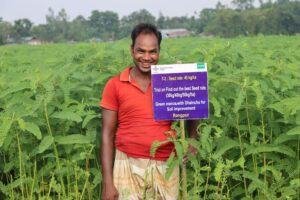
Rice availability has been considered a key indicator of food security in Asia for many years. Thus, rice continues to command unrivaled political attention in Southeast Asia, drawing a heavy-handed approach to the rice economy from governments of exporting and importing countries. One recent policy that has been a subject of constant argumentation is the rice self-sufficiency program of two top importing countries—the Philippines and Indonesia.
Toward self-sufficiency
The 2007-08 food price crisis deepened existing distrust between exporting and importing countries, and led to instability in the international rice market. It also triggered strong long-term policy responses that sought to secure domestic supplies and stable prices.
Two of the world’s largest rice importers pre-crisis—the Philippines and Indonesia—have taken steps to be less reliant on the world market. Both pursued substantial rice production initiatives and pledged to be self-sufficient by 2013 and 2014, respectively, and aimed to be net exporters soon after.
In the context of an opaque, thin, and relatively unstable rice trade, the push by the Philippines and Indonesia toward self-sufficiency seems logical to secure domestic supplies and stabilize domestic rice prices. However, this strategic shift will have an impact on the larger regional rice economy.
Securing sufficient local supplies and stabilizing domestic rice prices will come at a substantial economic cost to both countries. Many rice farmers are choosing to diversify production to include or exclusively produce other crops in order to generate a larger income, given the declining economic importance and profitability of rice, as evident in its decreased share in the region’s gross domestic product (GDP) from 14.5% in 1961 to just 3.8% in 2007. Hence, sticking to planting rice to produce a sufficient amount may pose economic dilemmas. Furthermore, with limited or no imports, consumers may face increased rice prices as governments support farmers and local rice production by buying rice from the farmers at a higher farm-gate price.
Perhaps the strongest argument for Indonesia and the Philippines to resist isolationist self-sufficiency and to continue to participate in the world rice market is to ensure stability during localized shocks. Although no existing studies examine the costs and benefits of these countries’ strategies as they move toward self-sufficiency, general literature on rice trade liberalization suggests that participation in the world market, rather than self-sufficiency strategies, serves to better secure domestic supplies, especially during local market shocks.
Building trust
As they shift toward being stronger producers of rice, the Philippines and Indonesia can generate more trust and enhanced cooperation in the regional rice economy, especially since Southeast Asian countries share similar challenges in food security.
Both countries could further build on this trust by maintaining and deepening participation in the world rice market. Isolationist self-sufficiency in rice and restricted world market engagement are not viable long-term food security solutions. More open engagement with the world rice market would enhance both countries’ security in rice supply, resilience to shocks, and opportunities to export. It would also have an impact of broadening and strengthening the regional rice market. Building trust and confidence in the market through enhanced engagement will be just one step, but it can be a significant measure to promote a more stable Southeast Asian rice economy.
_________________________________________
Ms. Trethewie is a senior analyst at the Centre for Non-Traditional Security Studies, S. Rajaratnam School of International Studies, Nanyang Technological University in Singapore.









